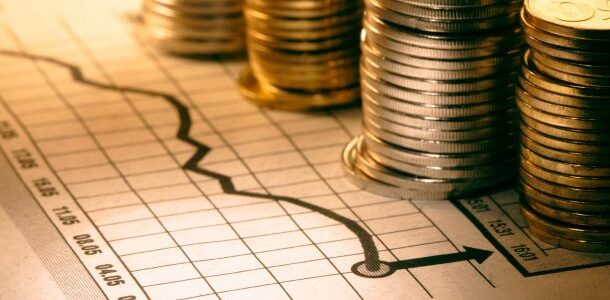
The volume of Ukraine’s gross external debt increased by $8.8bn during the second quarter of this year and amounted to $148.6bn at the end of the half-year, according to the website of the National Bank of Ukraine (NBU).
“Relative to GDP, the debt increased from 90.5% to 92.7%,” the National Bank noted.
At the same time, the external debt of the public sector for the second quarter of 2023 increased by $8.4 billion to – $84.5 billion (52.7% of GDP), while the debt of the private sector – by $0.4 billion to $64.1 billion (40% of GDP).
As indicated by the National Bank, the growth in the public sector was due to net attraction of $8.8 billion in loans from international partners, including $3.6 billion from the International Monetary Fund (IMF), while the government debt on securities decreased by $0.12 billion.
According to the central bank, the volume of external liabilities of Ukrainian banks decreased by $0.08bn to $1.8bn (1.1% of GDP), mainly due to the reduction of debt on loans by a similar amount.
External debt of other sectors of the economy increased by $0.2bn to $41.3bn (25.8% of GDP). As explained by the regulator, this was due to the growth of external debt on guaranteed loans – by $0.14 billion and securities – by $0.05 billion.
Debt of other sectors of the economy, including intercompany debt, increased by $0.52 billion to $62.3 billion (38.9% of GDP) in the reporting quarter.
Direct intercompany debt of enterprises in direct investment relations increased by $0.28 billion to $21 billion (13.1% of GDP) in the quarter due to the increase in external debt on credits and loans of direct investors by $0.26 billion.
The NBU estimated the increase in private sector debt due to exchange rate changes at $0.4 bln.
The volume of overdue debt of the real sector on non-guaranteed loans (including from direct investors) increased by $0.13bn in April-June and amounted to $25.4bn (15.9% of GDP) at the end of the second quarter. According to the NBU, the share of Cyprus in it is 58.1%. In addition, the shares of the UK increased by 1 percentage point (p.p.), to 9.2%, and the Netherlands – by 3 p.p., to 5.8%.
According to the National Bank, Cyprus at the end of the second quarter remained the main creditor country in terms of the geographical structure of private sector debt on non-guaranteed loans (together with intercompany debt) – 49.2% of the total volume, its share since the beginning of the year increased by 0.4 p.p.
The shares of the Netherlands, Germany and Switzerland increased by 0.1 pp. to 7.3%, 3.0% and 2.6% respectively, while the share of the USA remained at 3.0% and the shares of the UK and Luxembourg decreased by 0.1 pp. – to 10.7%.
The main currency of Ukraine’s external borrowings at the end of Q2 2023 remains the US dollar – 50% of total external debt, but its share decreased by 3 p.p. over the quarter. At the same time, the share of borrowings in euros increased from 31.9% to 33.8%, as well as in SDRs to the IMF – from 9.9% to 11.4%, while the share of external debt in hryvnia decreased by 0.2 p.p. to 1.6%. – to 1.6%.
The volume of short-term external debt by residual maturity for the second quarter of 2023 increased by $1.2 billion and amounted to $40.8 billion as of June 30, 2023.
Meanwhile, general government liabilities that require repayment over the next 12 months increased by $0.9 billion to $3.8 billion due to higher future government loan repayments, including $0.2 billion to the IMF, while central bank repayments decreased by $0.18 billion to $1.3 billion due to lower IMF repayments.
The volume of short-term liabilities of the banking sector remained almost at the level of the previous quarter and amounted to $1.3 bln.
The total volume of real sector borrowings (together with intercompany debt), which are to be repaid over the next 12 months, increased by $0.5bn and amounted to $34.4bn as of June 30, 2023. The National Bank specified that the growth is due to an increase in the volume of future repayments on debt securities by $0.4bn.
Experts Club research project and Maxim Urakin recently released an analytical video about the economy of Ukraine and the world.
Subscribe to the Experts Club YouTube channel by clicking here – https://www.youtube.com/@ExpertsClub